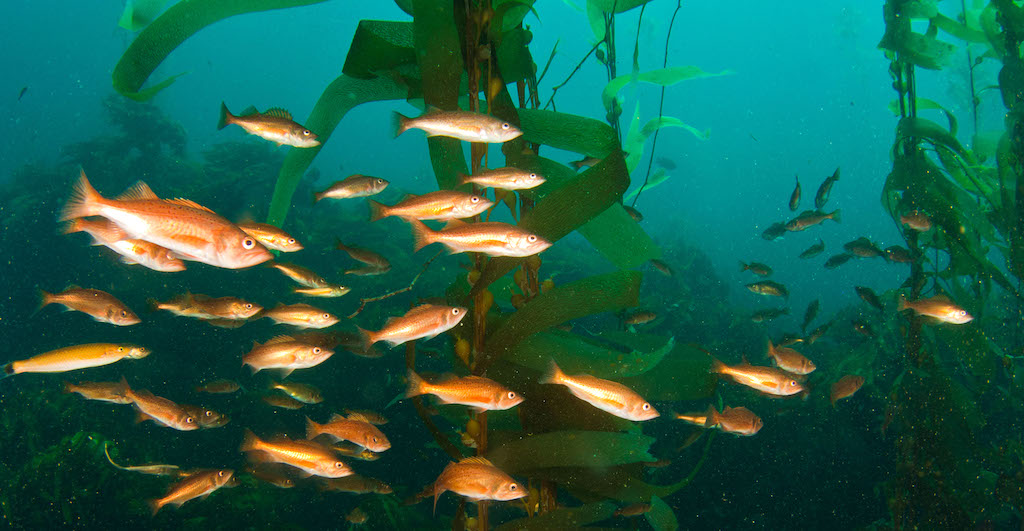Captain Steve Kesling’s 31-foot fishing boat idled in 250 feet deep water near a small island in Puget Sound. In the boat were two volunteers and NOAA fisheries biologist Kelly Andrews, who was overseeing a study to avoid accidental catches of threatened and endangered rockfish. Begun in March 2017, Kelly’s research compared three types of bait: frozen herring, artificial lures, and live Pacific sanddab, a type of flounder.
The fishers were using Pt. Wilson Jig Darts, a green, yellow, and silver fish-shaped lure about six inches long. One of the volunteers quickly caught a copper rockfish, historically the most common rockfish species in the Sound. At 17 inches long and weighing about three pounds, the fish was brownish with a hint of gold on top that mottled down to white, with hints of pink toward his head and brown toward his rear. Like most rockfish, this one had stout, sharp dorsal spines, which Kelly astutely avoided.
Distressingly, the copper’s stomach extruded out of his mouth looking like a huge thumb. Bottom dwelling coppers, like other rockfish, achieve neutral buoyancy, which allows them to remain in deep water, by regulating gas in their swim bladders. At the surface with its much lower pressure, gasses within the bladder expand, leading to what is known as barotrauma, when the fish can have a bloated or ruptured swim bladder, distended stomach and bulging eyes.
Most rockfish that suffer from barotrauma cannot descend back to their home habitat and typically end up dead, floating on the surface, which has contributed to a decline in rockfish numbers. But Kelly was ready to aid the fish caught that day. After measuring each one, he clamped a five-inch-long, black plastic tube with a pressure-sensitive, spring-loaded clamp on the end to the fish’s mouth. He then attached the tube, called a descender, to a weighted line, dropped it overboard, and returned the fish to the deep.
Prior to the development of descenders, fishers attempted to aid barotraumatized rockfish by using a hook or hypodermic needle to puncture the swim bladder. It had little positive benefit. In contrast, initial studies of rockfish taken back to depth with descenders have shown that the recompressed fish typically survive, though fish from very deep water (greater then 400 feet) often suffered from disorientation and vision problems.





